The European debut for a series of new concept cars at the 2018 Geneva Motor Show gives an indicator to the design thinking Toyota will apply in its accelerated programme of electrified vehicle development.
The Concept-i series of battery electric vehicles (BEVs) and the Toyota FINE-Comfort Ride fuel cell electric vehicle (FCEV) demonstrate how new technologies might be used to increase the scope for personal mobility and help build a sustainable society.

At the end of 2017, Toyota Motor Corporation announced its intention to increase the pace of its electrified vehicle development, targeting more than 5.5 million sales by around 2030. More than one million of these are expected to be battery electric or fuel cell electric vehicles with zero emissions.
This ambition, which will help deliver the Toyota Environmental Challenge of a 90 per cent reduction in global average emissions from new vehicles by 2050 (based on 2010 levels), will see all Toyota models being electrified, or having an electrified option within their range, by 2025.
To help achieve this significant increase, Toyota has also initiated a feasibility study with the Panasonic Corporation for a new joint business, focusing on the challenges of performance, safety, price and stable supply of prismatic batteries for electrified vehicles.
Toyota is giving an insight into the design and engineering it is exploring to maximise the potential of future BEVs and FCEVs, not just to help safeguard the environment, but also make mobility safer and more accessible, particularly for elderly and disabled people.
The Concept-i Series is a family of three BEVs, each designed to meet the needs of different types of user in different driving environments. The Toyota FINE-Comfort Ride Concept looks at how FCEV technology can be developed to produce a spacious, new form of premium saloon with a flexible layout. By applying artificial intelligence, gathering big data and using an in-car Agent, Toyota envisions how car and driver can become partners, with the vehicle monitoring the mood and well-being of the driver to ensure a safe and enjoyable journey.
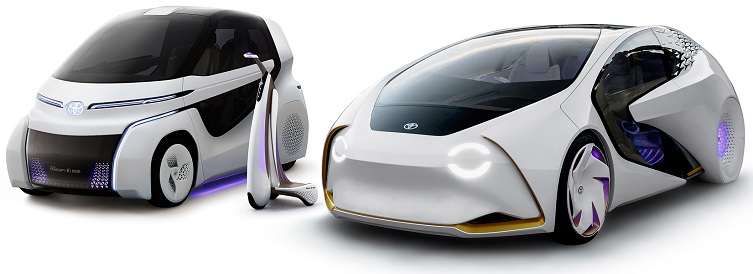
Toyota looks to the future of mobility with Concept-i series
Toyota’s new Concept-i series of vehicles use artificial intelligence (AI) to understand their drivers, allowing people and cars to become partners who can learn and develop with each other. This vision for future mobility is revealed for the first time in Europe at the 2018 Geneva Motor Show in the form of three Toyota Concept-i models designed to meet different personal transport needs.
The four-wheel Toyota Concept-i is joined by Concept-i RIDE, a universal small mobility vehicle suitable for all, including wheelchair users and elderly people, and Concept-i WALK, a “walking area” vehicle, designed for safe use on pavements among pedestrians.
Historically Toyota has sought to capture the freedom and joy of mobility in the vehicles it makes, the kind of cars that might be described by Japanese owners as “beloved”. The Toyota Concept-i series has been conceived as “beloved cars” for a new era, guided by the principle of being “more than a machine, a partner”.
The core technology for the Toyota Concept-i series is one that understands people (Learn), applying AI to recognise human emotions and estimate what the driver’s preferences will be. This combines with automated driving systems to provide safety and peace of mind (Protect). It will also be possible to advance the technology to the point where a driver’s feelings can be anticipated, helping provide new dimensions of driving pleasure (Inspire).
Toyota Concept-i
- Four-wheel model which uses AI and serves as a partner that understands people
- It combines technology that understands people (Learn) with automated driving and Agent technology, and provides drivers with safety and peace of mind (Protect) and fun-to-drive experiences (Inspire)
- Designed with a forward-projecting silhouette and advanced HMI for a new user experience, including interaction with an Agent
- Toyota plans roads testing of vehicles equipped with some of the concept car’s functions by around 2020
Technology that understands people (Learn)
Concept-i gauges the driver’s alertness and emotional state using a complex reading and interpretation of their expressions, actions and tone of voice. It compares general information, such as news bulletins on the web, with information on individuals, such as their social media activity, GPS information and conversation history in the car, estimating their preferences based on topics that re-occur.
The technology that understands people (Learn) uses deep learning, such as measuring emotions and estimating preferences. Based on this, the Toyota Concept-i series achieves innovation value in areas of safety and security (Protect) and fun-to-drive experiences (Inspire).
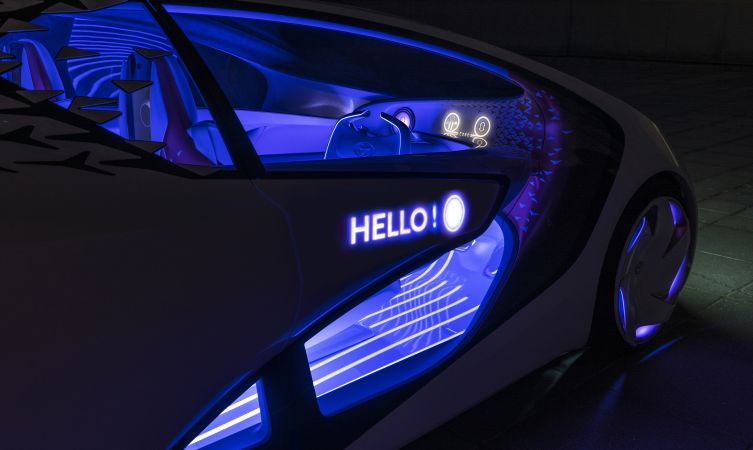
Safety and peace of mind (Protect)
As well as taking into account the car’s external conditions, Concept-i uses technology that understands people to gauge the driver’s personal state, and monitors the reliability of both driver and car. For example, if the car’s reliability is high and support is deemed necessary, such as when the driver is in a dangerous or highly stressed state, Concept-i switches to automated driving. Operation is based on Toyota’s Mobility Teammate Concept for automated driving, which is designed to both watch over and assist drivers as required.
It also provides support by stimulating the senses, including sight, touch and smell, according to the driver’s mood and levels of alertness and fatigue. This can help drivers feel more relaxed and combat drowsiness.
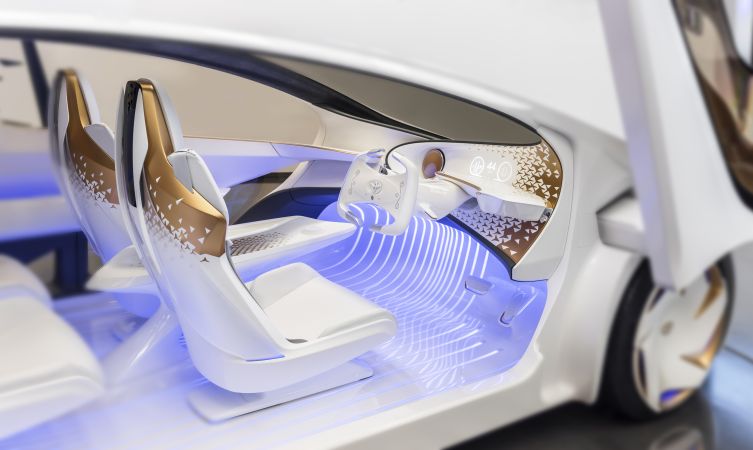
Fun-to-drive (Inspire)
Concept-i can engage in conversations based on its understanding of the driver’s mood and preferences. The car suggests topics of interest, creating a new style of two-way, free conversation. It can also create an “emotion map,” periodically charting the driver’s emotional state and GPS information. Applying the information it gathers as big data, the Concept-i series can suggest new, enjoyable routes as slight detours from planned journeys.
The vehicle has a forward-projecting, futuristic silhouette and a simple, open interior. Starting from the Agent at the centre of the instrument panel, the design theme flows from the inside out, with seamless styling that connects the design of the instrument panel to the exterior bodywork. It provides a new user experience through intuitive HMI interaction with the Agent, using a 3D head-up display.
Toyota plans to be road-testing some of the concept car’s functions by around 2020.
Toyota Concept-i RIDE
- Small vehicle for universal use based on the concept of user-friendly city mobility
- Gull-wing doors, universal sliding seat and joystick control allow easy operation by wheelchair users
- Seat lay-out and automated driving functions make it possible for anyone to drive safely and securely
- Envisioned for vehicle-sharing schemes
Universal specifications and usability for wheelchair users
The Concept-i RIDE has gull-wing doors to provide easy access and an electric seat that slides towards the door opening so that people who might feel uneasy moving between their wheelchair and the car can make the transfer with ease. The opening/closing of the doors accommodates loading and unloading of the wheelchair; this can be easily stored in the rear thanks to the vehicle’s seat design.
The car is controlled using a joystick instead of a steering wheel and accelerator and brake pedals, and its compact dimensions make it easy to navigate in and out of single-car parking spaces. The emphasis has been placed on ease-of-use when driving, stopping or parking.
The AI Agent, a feature of all the Concept-i series vehicles, is positioned on a large display in the instrument panel. It actively presents information to support and enhance journeys, such as details of facilities with access provisions for disabled people.
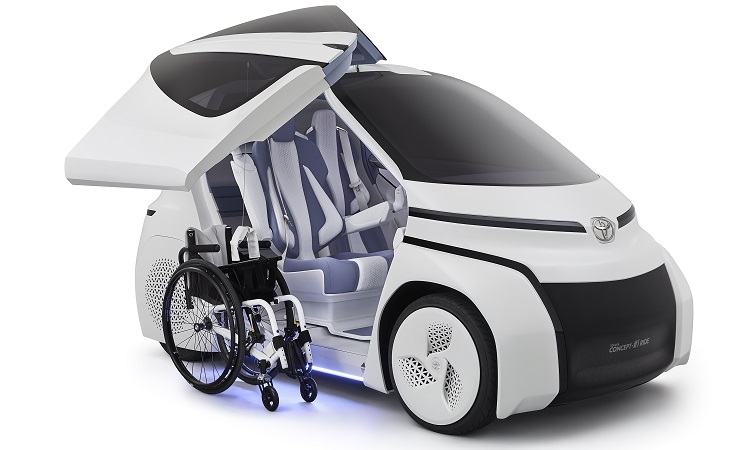
Safety and peace of mind
The driver’s seat is positioned centrally when the vehicle is being driven. Assistance functions such as automated parking/automated valet parking are provided so that anyone, not only wheelchair users (elderly people, for example) can drive safely and with peace of mind.
Toyota envisions the Concept-i RIDE being used for vehicle sharing schemes, giving more people the chance to enjoy the freedom of mobility – something that is currently accessible mainly through individual vehicle ownership.
Toyota Concept-i WALK
- Compact mobility vehicle for use in pedestrian areas
- Equipped with an automated driving function, increasing people’s range of movement in safety and security
- Three wheels and a variable wheelbase, steering function and low floor make for easy use with no need for specific clothing or footwear
- Suitable for shared services, for example at leisure spots and other popular outdoor locations
Safe driving on pavements and in pedestrianised areas
The Concept-i WALK can rotate on the spot, is shorter than an average stride and narrower than a person’s shoulder width. On the street it, takes up about the same space as a walking pedestrian. It also understands its driver, based on conversations with the AI Agent and data obtained from sensors in its handles, and can guide the user safely should the situation demand. If the vehicle senses danger while in motion, it will warn the driver and automatically take avoiding measures. The three wheels and the change in wheelbase according to vehicle speed ensure stability when driving and stopping.
Easy for anyone to use
The steering function means that Concept-i WALK riders don’t have to shift their body weight to negotiate bends and turns. The low floor makes it easy for people to get on and off, with no restriction of age, gender or even clothing.
Again, Toyota anticipates the vehicle will be suitable for shared services. The aim is to provide a vehicle for short distance mobility, co-ordinated with other transport facilities at leisure spots and other popular outdoor locations.
Toyota FINE-Comfort Ride
Exploring future possibilities for fuel cell electric vehicles
- Future premium saloon concept powered by a hydrogen fuel cell with in-wheel electric motors, allowing for zero harmful emissions driving and a range of around 1,000 km
- Powertrain allows for a spacious interior with flexible seating arrangement
- Equipped with an Agent function and a touch display that can be accessed by all occupants
- Distinctive and aerodynamically efficient diamond-shaped body that flares towards the rear
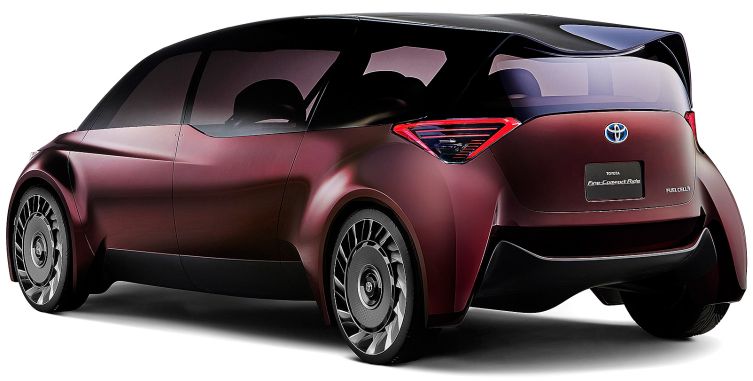
The Toyota FINE-Comfort Ride is a fuel cell electric vehicle (FCEV) that envisions mobility in a low-carbon society, making advanced use of hydrogen and renewable energy. It has been conceived as a “new form of premium saloon” with a flexible layout of a kind only possible in electric-powered vehicles. It can also make use of a large amount of electric power, using hydrogen as the source of energy.
The vehicle, presented in Europe for the first time at the 2018 Geneva Motor Show, offers excellent environmental performance, producing no CO2 or “substances of concern” (SoC) when driven. It also convenient to use, having a generous cruising range and a modest hydrogen refuelling time of around three minutes.
The cabin section of the body has a diamond shape that increases in width from the front to the centre, before narrowing towards the rear. This maximises space for the second row seats and allows for an aerodynamically efficient design.
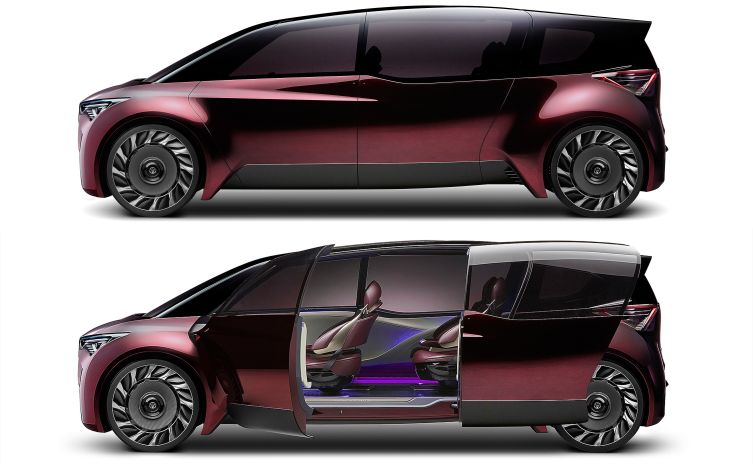
The flexible cabin layout is a direct benefit of using electric power: by equipping the car with in-wheel motors rather than fitting a single motor under the bonnet, the wheels can be positioned at the very corners of the vehicle. An underbody cover helps achieve a high level of stability and quietness levels that are appropriate for a premium saloon.
The Toyota FINE-Comfort Ride embraces the idea of future mobility being more than simply a ride but something that can give people additional value, while moving them in a highly comfortable environment. The car is equipped with a digital assistant function and touch display, conveniently arranged around the driver and passenger seats so that everyone on board has easy access to information. The seats themselves have flexible adjustment to suit different personal postures. The seating can be arranged so that Toyota FINE-Comfort Ride can be used as an individual space, or a place several people can use for mobility and communications.
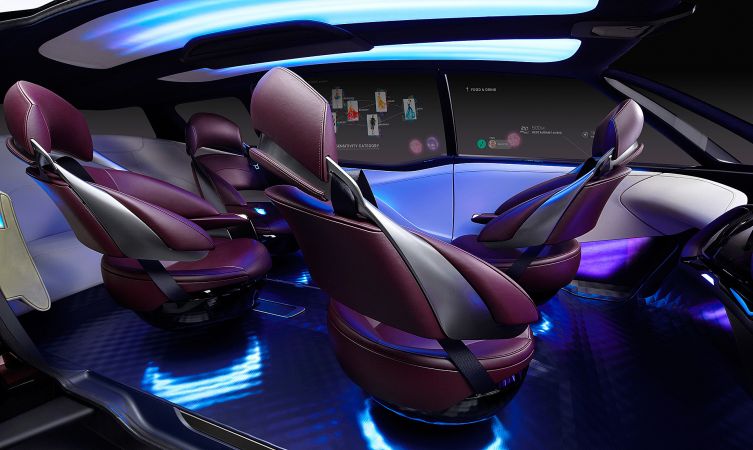
The car runs quietly and smoothly and makes full use of the high electricity generating capacity of its hydrogen fuel. The interior has a full range of equipment and the car can achieve of a cruising range of around 1,000km (Japan JC08 test cycle).
It is a six-seater vehicle, measuring 4,830mm long, 1,950mm wide and 1,650mm high, with a 3,450mm wheelbase.
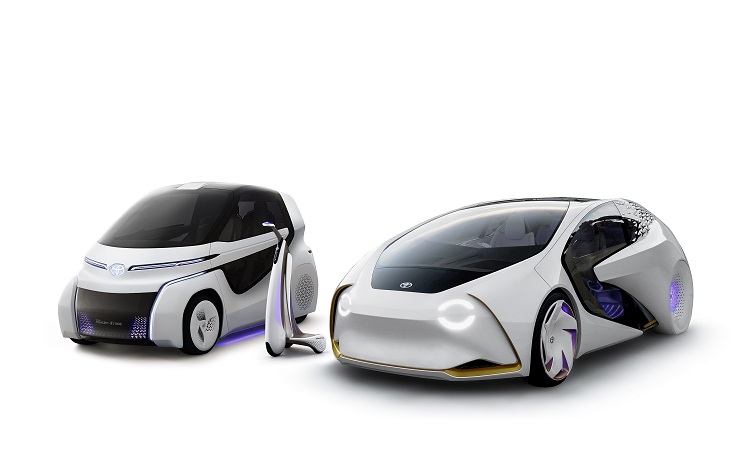
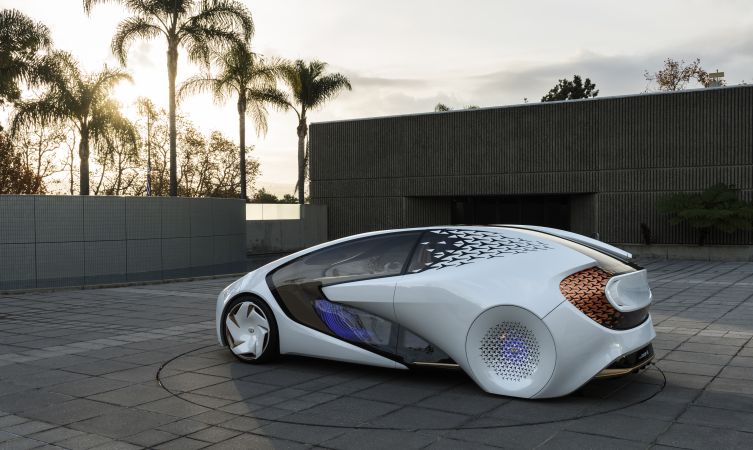
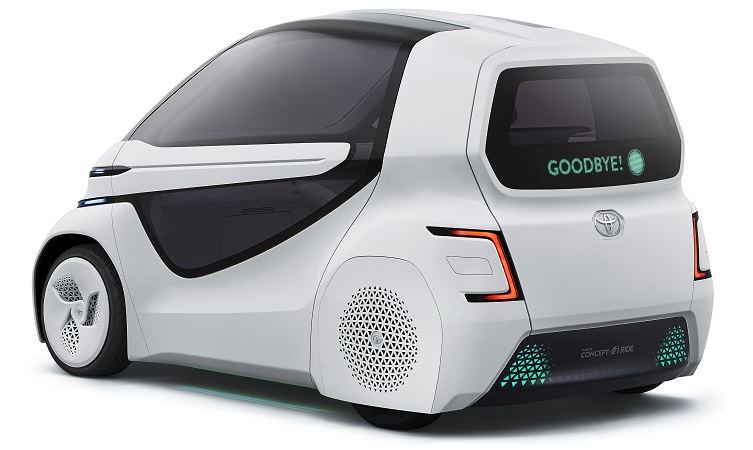
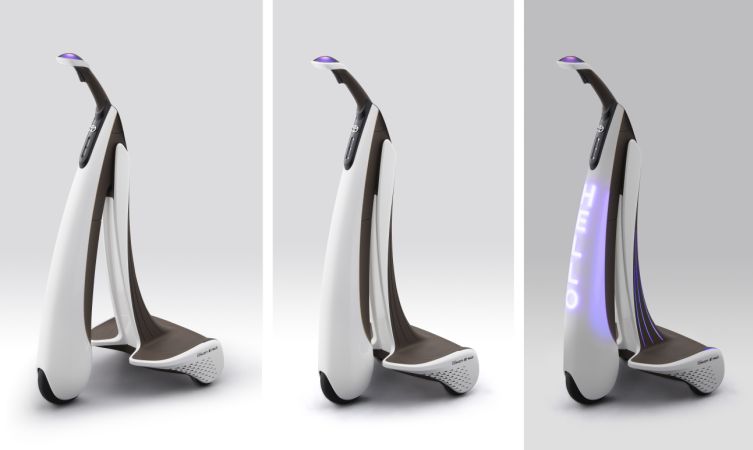


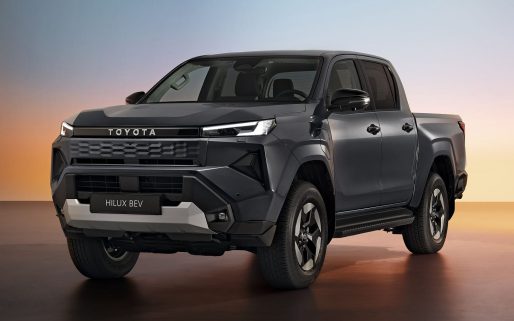

I need one now, not in the year 2020,we’ve waited long enough